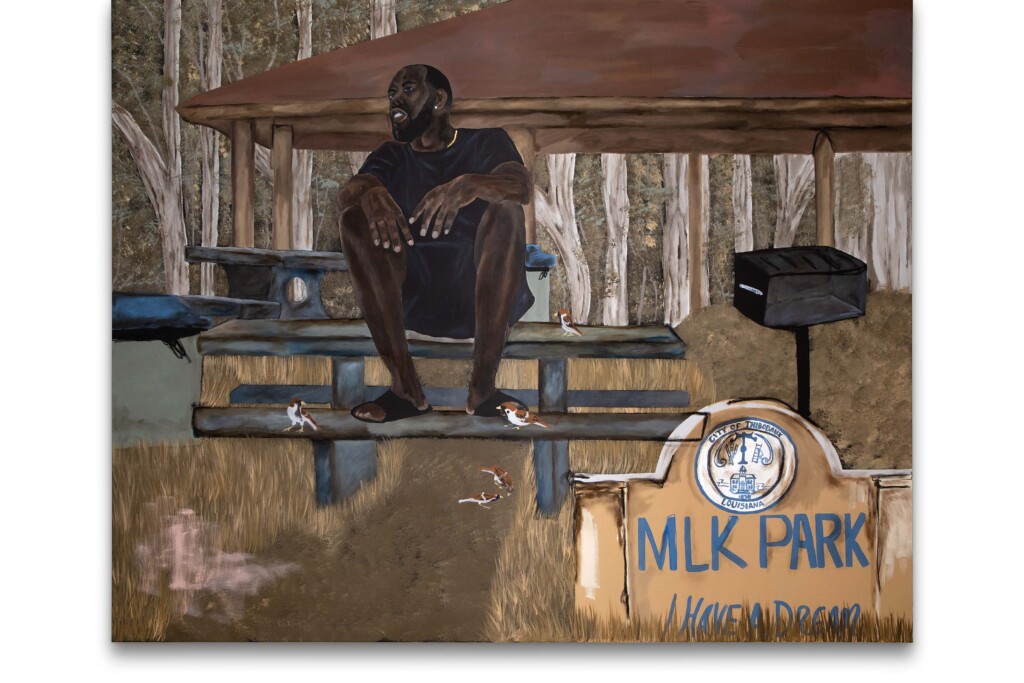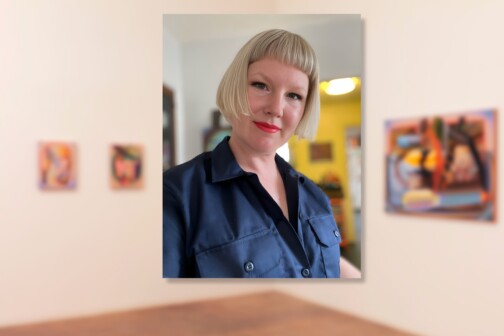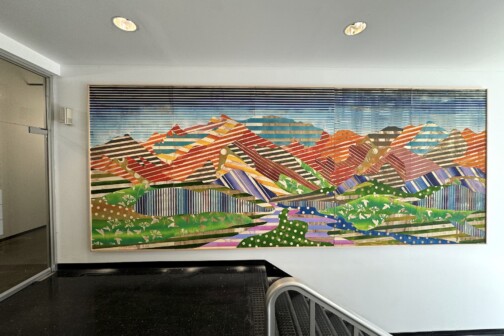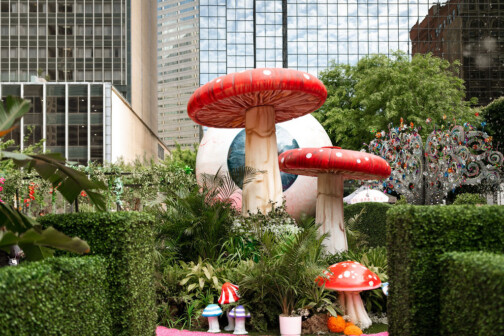Curator María Elena Ortiz had been at the Modern Art Museum of Fort Worth for less than six months when she first visited artist Jammie Holmes’ studio in the Design District. Holmes was wearing clothes of his own design—an all-black outfit that included a t-shirt and baseball cap. At least four large paintings were in process. Determined before all else to explore the talent of local artists, Ortiz was impressed with a style that she recognized intuitively as distinctive, a combination of deeply human figuration, lively, expressive brushstrokes, and themes she quickly noticed were immensely personal.
Fifteen of these paintings and an installation are on display until November 26 in Jammie Holmes: Make the Revolution Irresistible, the first solo museum show for Holmes—who is collected privately and represented and shown by Marianne Boesky Gallery in New York—and the first show at the Modern to feature a local artist at this scale in a long time. It was, Ortiz says, simply “the next natural step.”
I’ve been awaiting that step since Holmes flew banners bearing the last words of George Floyd over the skies of five U.S. cities, including Dallas. It was June 2020, and the painter had put down his brushes to coordinate the work, titled They’re Going To Kill Me. Now as then, he taps the pulse of contemporary social issues, offering images of the South.
When he was young, Holmes sketched. In Thibodaux, Louisiana, he grew up in a community surrounded by family and neighbors facing the many repercussions of poverty and marginalization, but surrounded, also, by a resilience buoyed by kinship and religion. A wealth of experiences makes its way into paintings full of empathy that highlight the dignity of figures doing ordinary things. They add to the canon of Black figuration with their striking, stirring honesty, and they feel, above all, alive—current, urgent, essential.
A moving yet restrained painting of a rickety shotgun house with a box fan propped in the window speaks of context, of Thibodaux (a word Holmes has floated in the bottom left), of the American South. In all the other paintings, however, figures dominate, their presence quietly powerful. In some cases, the poses are deceptively classical, almost formal. In Endurance, a seated figure whose head is being shaved with an electric shaver has everything of the formal seated portrait about him. But in his sneakers and baggy shorts, he is informal, imminently of our world—the extension cord for the razor snakes across the floor.
It would be a mistake to take these scenes, however intimate, as purely autobiographical.
When he paints, Holmes is thinking about “how I feel and how I want others to feel,” he says. “I’m constantly thinking about the people who are underrepresented. I grew up where it wasn’t a Black or White thing, it was a thing of class. I’m always thinking about that, the human experience.”
The human experience includes pain, as in the juxtaposition of title and figure in The Illusion, in which a Black male figure crosses his arm over a t-shirt emblazoned with “4th of July” and an American flag and stares into the distance. The pose is arresting, the scale heroic, the unsettling statement deftly foregrounded. A mother holding her young son on the hood of a Cadillac is full of tenderness, her face pressed against his, but her eyes are on us—intense and somewhere between probing and disarming—as she kisses his cheek. The gaze, as in most of his work, is mesmerizing.
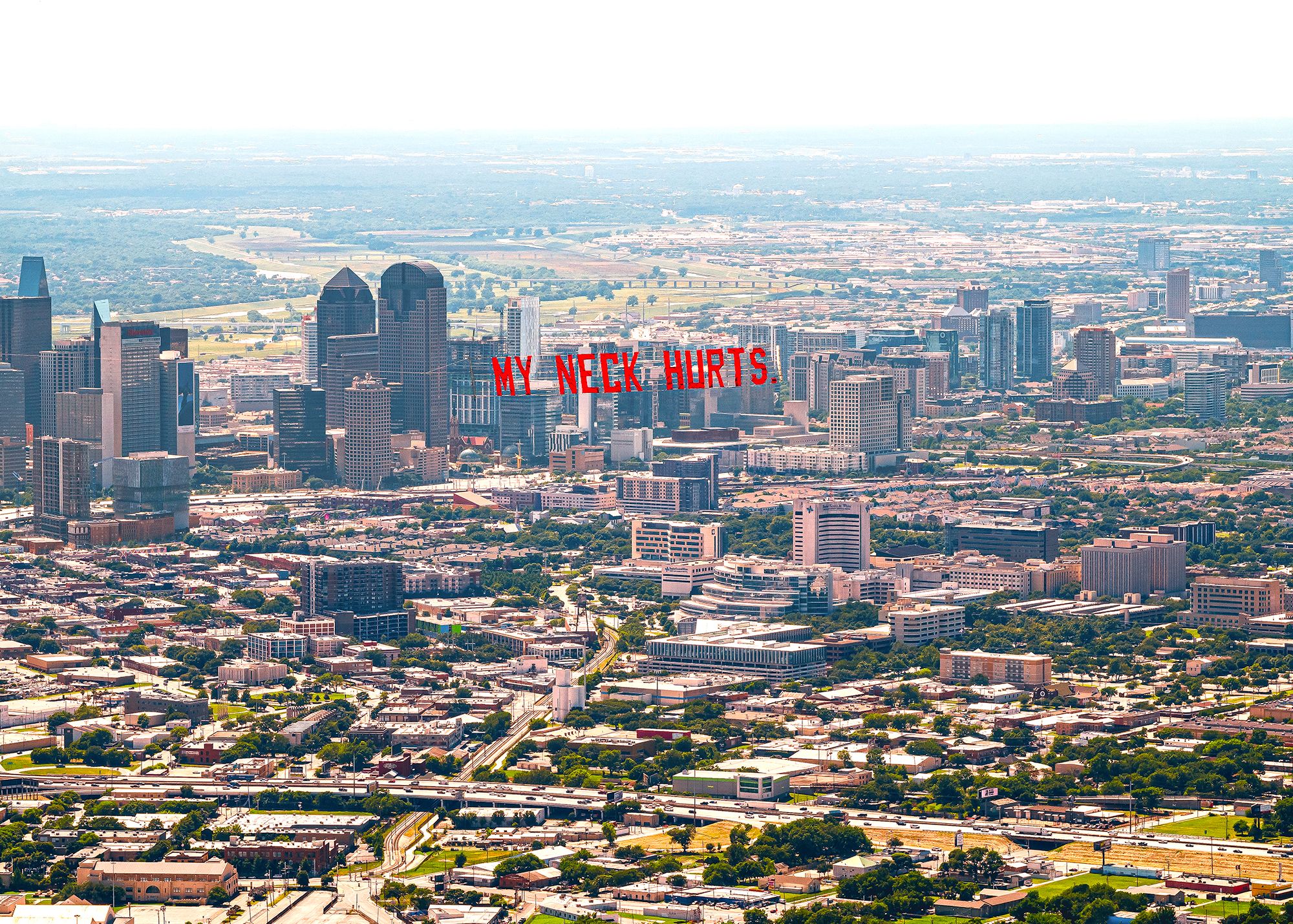
Some faces help tell the stories of a broader Black community through historical specificity, deftly tying personal narrative with politics. Part of his aim in the solo show was to “give roses,” he says, to members of the Black Panther Party, whom he sees as radical and subversive seekers of change who created programs, like the People’s Free Food Program, that “even today the government systems are using.” Black Panther Party member Geronimo Pratt was one of his uncle’s close friends and lived 25 minutes away from where Holmes grew up. And in general, Holmes sees in their image the model of youth “fighting for a better day.”
The face of Fred Hampton, the Black Panther Party member who was killed at the age of 21, appears on a black-and-white television set in the center of a painting that features versions of the Pan-African flag.
“Jammie is sharing a story that is not often talked about,” Ortiz says. “The way he [is] depicting males in moments of fragility, vulnerability.”
But Holmes didn’t begin with faces. In fact, he couldn’t bear to paint them at first. “I couldn’t look in the mirror for years of my life, because I didn’t feel I was where I wanted to be in life,” he says. “Then I started going to therapy. It started helping me see myself. I could start painting portraits of myself.” Face, eyes, and hands.
The journey toward faces paralleled the self-taught painter’s apprenticeship, which he began as an accompaniment to psychotherapy in 2017. From loose, expressionistic work full of color and gestural brushstrokes, Holmes assiduously taught himself figuration, pulling the rawness into shapes. Skin tone—the beautifully nuanced patter of browns and blacks—came in late 2019, he says. He started painting himself in 2021.
An identity tableau, Zebra in the Room is a striking horizontal composition that differs from any of his other work in its format. It speaks honestly of Holmes’s upbringing, with the hidden clues of a visual puzzle. The painting includes an embodiment of the women who raised him, a copy of the New Orleans Times Picayune reporting on Hurricane Katrina, and an avatar of Holmes himself. “It’s like a big storyboard of who I am,” he says.
Most important is the inclusion of the zebra, which represents his father, who is from Sierra Leone, and with whom Holmes only reconnected four years ago, when he was 35. The fact that he is half African and half African American has been, for Holmes, the elephant in the room of his life—a fact he hasn’t often focused on. In the painting, the zebra stands truncated, a very deliberate half.
“I add symbols, because I want people to spend time with the painting. That was my dream,” Holmes says. “To have people stop and spend time with the painting.”
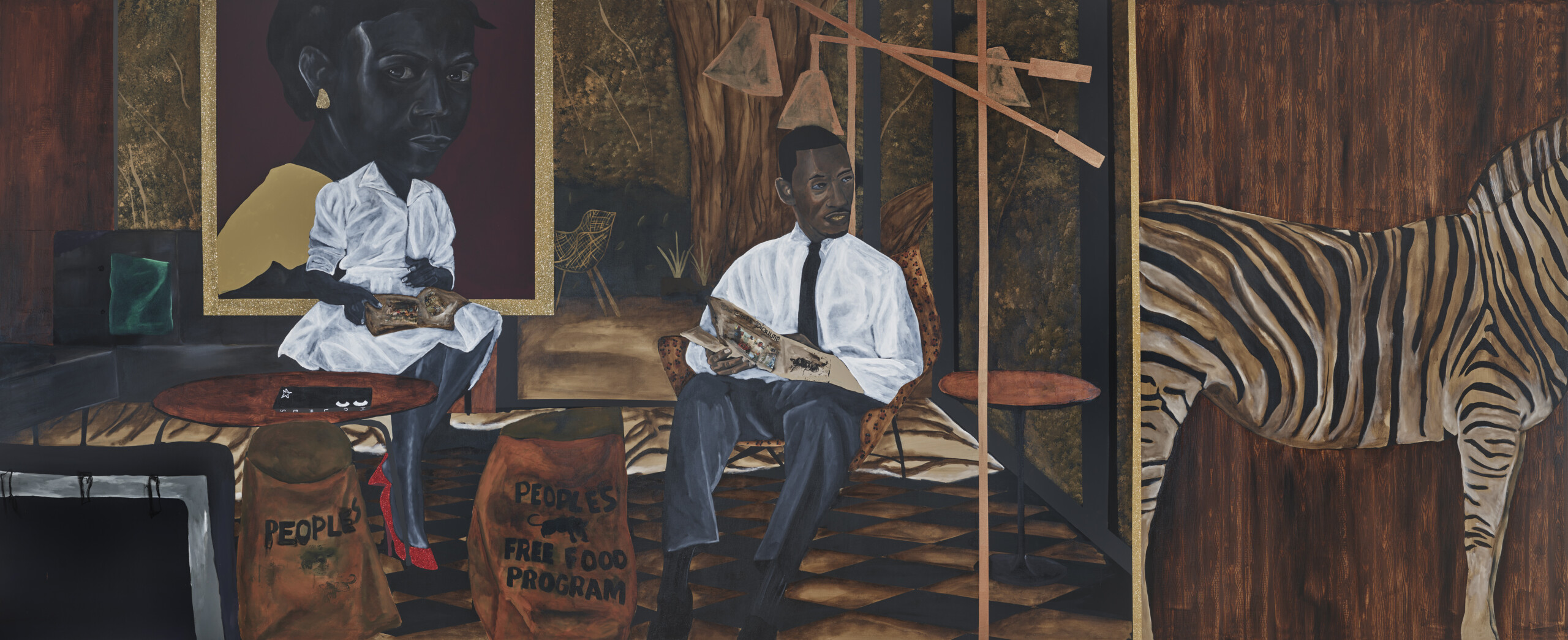
For the exhibition, Holmes created a considerable number of new works and also his first installation: a small, one-room chapel, complete with altar inside, which visitors can approach though not enter. “It was perfect,” he says. Because if he’s thinking about emotion when he paints, he is also asking himself, “What world do I want to build?” To invite viewers fully into his subjective world, he felt he needed something outside the paintings, a “symbol of my upbringing” and where he is right now, he says.
The exhibition title comes from Ortiz and Holmes connecting over words spoken by radical Black feminist filmmaker Toni Cade Bambara in an interview. Holmes appreciated the idea Bambara famously put forward that as a person who shapes culture and belongs to an oppressed community, her duty—and the duty of anyone else in her position—was to “make revolution irresistible.”
Seen as a whole, Holmes’s work undeniably tugs at the viewer. It is one of the most stirring exhibitions of figurative work you can see at the moment. He asks us to look and see and feel. It’s in the humanizing, as he believes, that the message becomes universal, the revolution irresistible. And it is worth seeing not once but twice, three times.
The Modern Art Museum of Fort Worth was Holmes’ own first experience of an art museum, years ago. Now, in turn, he says of his show, “It’s been introductory to the art world for a lot of people.” He’s received DMs from people telling him so, messages of gratitude for being the inspiration to step foot in an institution.
“It meant a lot to me to be one of those people,” he says, someone whose humanity made art accessible.
As for his family, he doesn’t know if they understand what this means in the arc of his career. “I think they still think I’m just having fun,” he says. Like when he used to sketch as a kid. Before paint became transfiguration. Before he became a visual poet of the everyday.
Holmes will give a lecture on Tuesday, Sept. 19 at 6 p.m. as part of the Tuesday Evenings at the Modern Lecture Series. A podcast of the talk will be available afterwards.
Author



